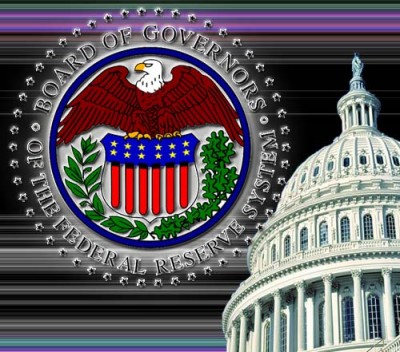Are the Twelve Regional Banks of the Federal Reserve System Private Entities?

The member banks of the Federal Reserve System are private corporations / banks. According to US Supreme Court, I found out, said this on January 3, 1928 in the case “United States Shipping Board Emergency Fleet Corporation v. Western Union Telegraph Co.“:
Instrumentalities like the national banks or the federal reserve banks, in which there are private interests, are not departments of the government. They are private corporations in which the government has an interest. Compare Bank of the United States v. Planters’ Bank, 9 Wheat. 904, 907, 6 L. Ed. 244. (Click here for further details)
Connected to the Freedom of Information Act (FOIA) case “Bloomberg LP v. Board of Governors of the Federal Reserve System, 08-CV-9595, U.S. District Court, Southern District of New York (Manhattan)“, Bloomberg reported in May 2009:
The New York Fed is one of 12 regional Federal Reserve banks and the one charged with monitoring capital markets. It is also managing $1.7 trillion of emergency lending programs. While the Fed’s Washington-based Board of Governors is a federal agency subject to the Freedom of Information Act and other government rules, the New York Fed and other regional banks maintain they are separate institutions, owned by their member banks, and not subject to federal restrictions. (Click here for further details)
In another FOIA case, Yvonne Mizusawa, Senior Council of the Board of Governors of the Federal Reserve System, stated on January 11, 2010 that the regional banks of the Federal Reserve System are indeed “private banks“. (See here) .
Moreover, I’ve asked today Nomi Prins, the author of the book “All the Presidents’ Bankers“, the following:
Do you think it is right to say that the Federal Reserve System includes private member banks, which receive a 6% dividend for their shares from the profits that the regional fed banks are making on their market operations?
Nomi Prins responded:
As I understand Section 7 of the Federal Reserve Act, that is the case. Stockholders, or member banks, of the Federal Reserve System are entitled to receive a 6% per annum dividend on their paid-in capital stock, and any surplus fund can be used to pay dividends in the event that any year’s current earnings of the Federal Reserve System are insufficient to cover funds for that year.
See the early 1922 letter from its General Counsel, here:
The material portions of Section 7 of the Federal Reserve Act read as follows:
“After all necessary expenses of a Federal reserve bank have been paid or provided for, the stockholders shall be entitled to receive an annual dividend of six per centum on the paid-in capital stock, which dividend shall be cumulative. After the aforesaid dividend claims have been fully met, the net earnings shall be paid to the United States as a franchise tax except that the whole of such net earnings, including those for the year ending December thirty-first, nineteen hundred and eighteen, shall be paid into a surplus fund until it shall amount to one hundred per centum or the subscribed capital stock of such bank, and that thereafter ten per centum of such net earnings shall be paid into the surplus.
“…Should a Federal reserve bank be dissolved or go into liquidation, any surplus remaining, after the payment of all debts, dividend requirements as hereinbefore provided, as the par value of the stock, shall be paid to and become the property of the United States and shall be similarly applied.” See here.
As additional information on the dividends, the law requires dividends are paid to reserve member banks, before the Fed transfers any excess earnings to the Treasury Dept. as interest on Federal Reserve notes, (see p 398 of the Fed’s 2013 annual report)… It should be noted that the amounts aren’t huge, for 2013, annual dividends were $1.65 billion. See here.

